Family : Acanthuridae

Text © Giuseppe Mazza

English translation by Mario Beltramini
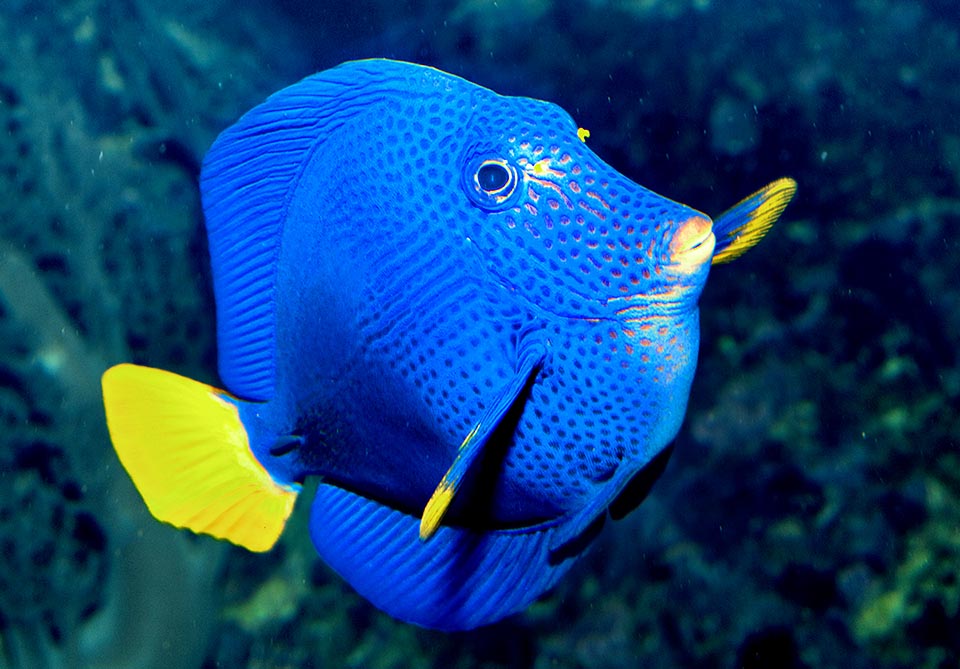
Zebrasoma xanthurum who embodied the character of Dory in the famous cartoon “Finding Nemo”, is actually known as Yellowtail surgeonfish © Giuseppe Mazza
The flamboyant Yellowtail surgeonfish (Zebrasoma xanthurum Blyth, 1852) who has embodied the character of the forgetful Dory in the famous cartoon “Finding Nemo”, belongs to the class of the Actinopterygii, the ray-finned fishes, to the order of the Perciformes and to the family Acanthuridae.
The name of the genus Zebrasoma originates from the Latin “zebra”, the well known African equine, and from the Greek “soma”, body. That is, it would be an animal with a zebra-like body, a term coined evidently for other species of similar shape, with a sail-shaped dorsal fin and concave profile between the eye and the snout such as Zebrasoma velifer or Zebrasoma desjardinii, because here there are no vertical stripes but only small dots that can at the most merge on the sides in a slight horizontal hatching.
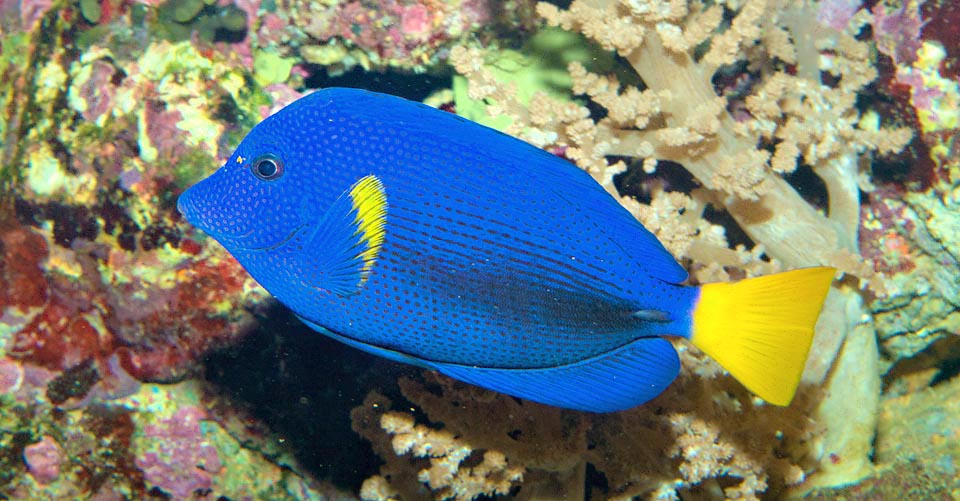
Like all Acanthuridae in fact has on the caudal peduncle a sharp removable blade it uses to defend itself from the attackers with sharp whips © Giuseppe Mazza
The specific term xanthurum, referred to the caudal yellow fin, is, conversely, easy to understand from the Greek “xanthos”, yellow, and “ura”, tail.
Zoogeography
The Yellowtail surgeonfish is common in the Red Sea, in the Arabian Sea, in the Gulf of Aden and usually in the tropical waters of the western Indian Ocean, from Somalia to the Maldives, to western India and to Sri Lanka. It is found then, as native, after Fishbase, also in Vietnam.
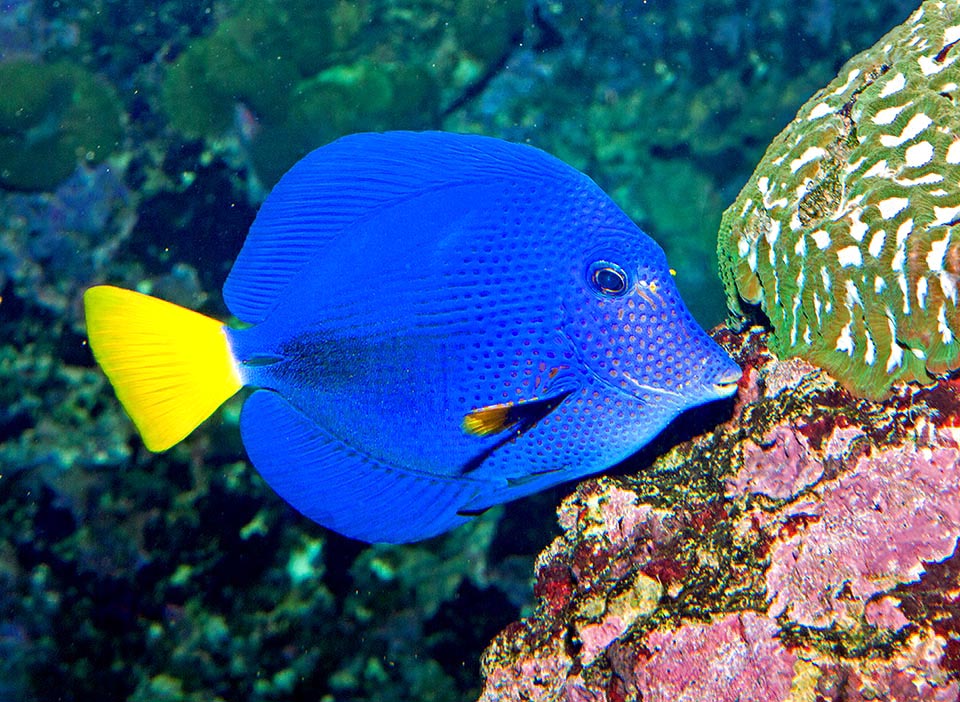
Otherwise it’s a peaceful fish, a herbivore that when disturbed just extends the dorsal and the anal fins in order to seem bigger and frighten the importunate © G. Mazza
It has been found in the Caribbean and in the Mediterranean, in Sardinia, but probably it was a matter of specimens released casually by the luxury cruising yachts often equipped with marine aquaria with ornamental exotic fishes.
A thorough search in Sardinia has in fact noted that upon the first cold weather the Zebrasoma xanthurum sighted had disappeared, perhaps devoured by groupers or simply dead from the cold because it is a species living at temperatures between 24 and 28 °C, whilst in the site of finding these drop in winter to 12-14 °C.
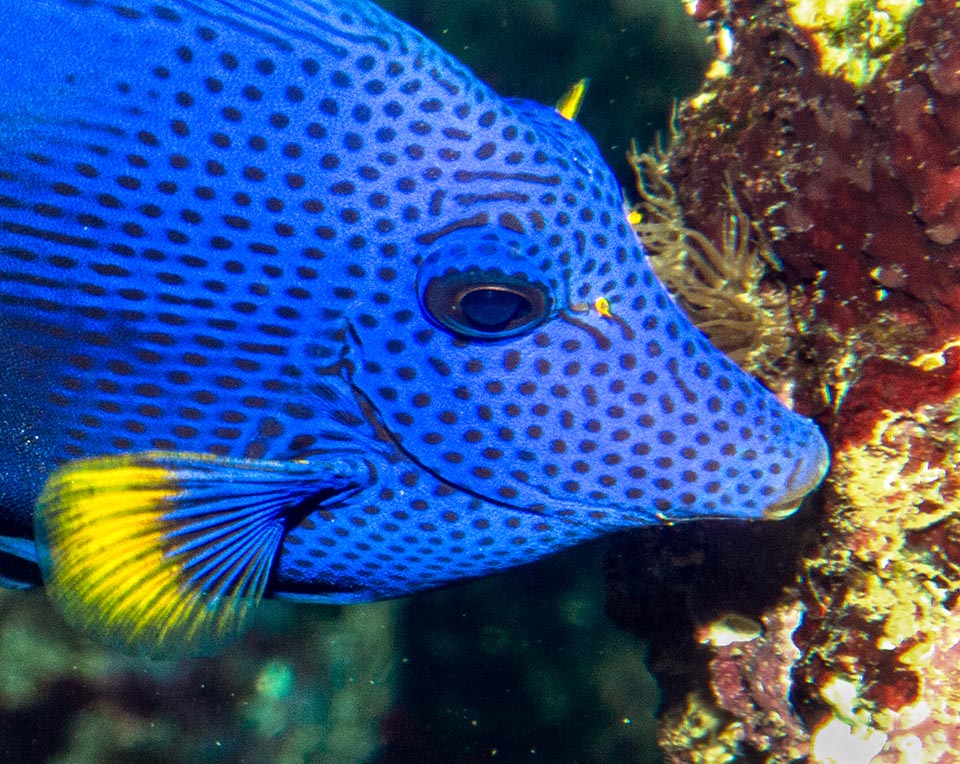
It lives in the Red Sea and in various sites of Indian Ocean, where it mainly feeds on the filamentous algae growing on rocks and corals © Giuseppe Mazza
Ecology-Habitat
It lives in the madreporic formations and along the rocky coasts covered by weeds between 2 and 20 m of depth.
Morphophysiology
It may exceed 25 cm, but the length is usually about 15 cm. The body is flat, more or less oval or roundish when the caudal fin and the anal are extended. The pelvic ones are of a very modest size, the pectorals are relatively pointed and the caudal is blunt.
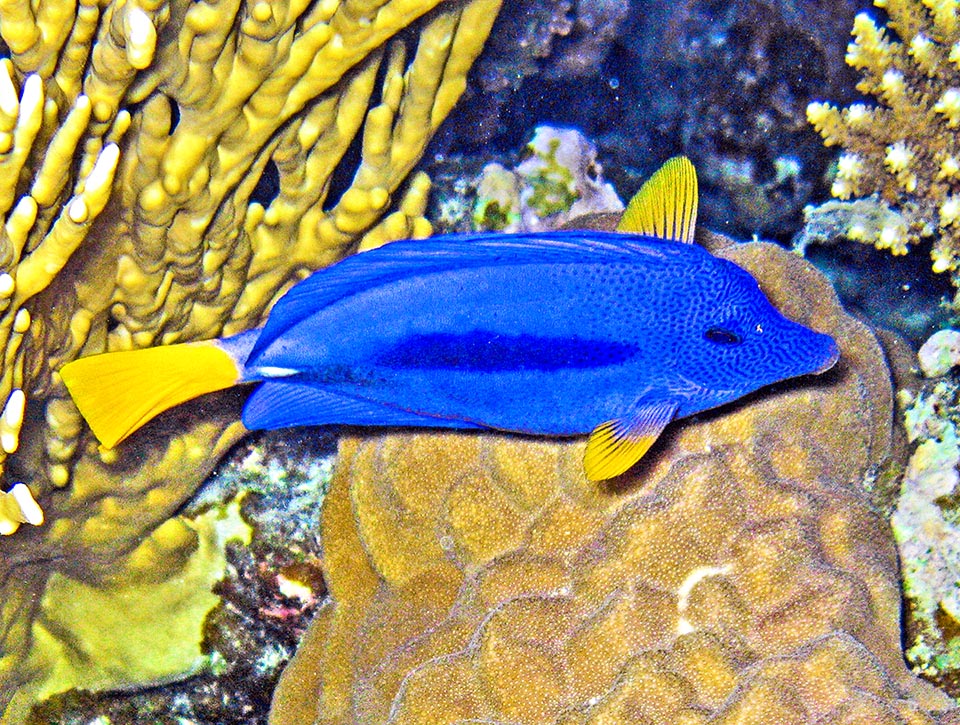
The livery is very variable with the outer part of the pectoral fins and the tail is yellow as states the specific name. On the sides we note, after the mood, dark bands © Gianemilio Rusconi
The caudal peduncle displays on both sides the sharp blade, typical to the surgeonfishes, and the protractile mouth has tiny teeth, also pharyngeal, for a diet based on filamentous algae.
Apart from the tail and the upper part of the pectoral fins, that are of a nice lively yellow, it is overall entirely blue, paler on the front where a dark dotting stands out, usually violaceous, at times reddish, that interests also the snout. The background colour changes slightly depending on the geographic zones and the mood of the fish. Then, during the night, the sides get paler, the blue colour fades and appears under the back, at 1/3 of height, a dark longitudinal line. This is its mimetic night pijyama.
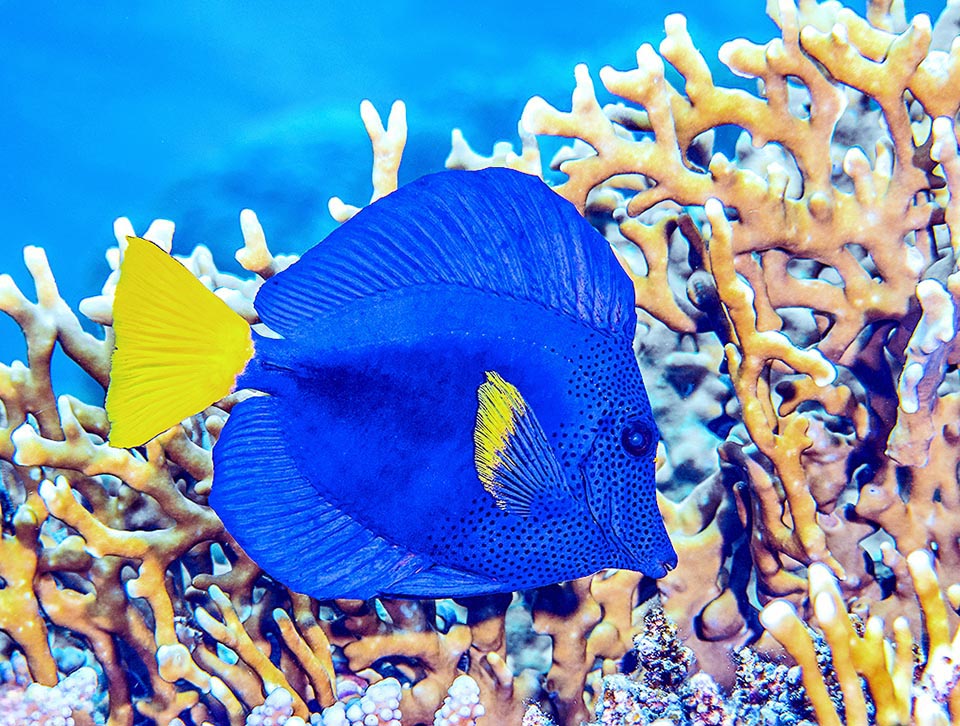
The reproduction of Zebrasoma xanthurum occurs in group with pelagic eggs entrusted to the currents and also if fished for the aquaria, it is not an endangered species © Rafi Amar
When their fins are extended, the juveniles have a triangular look, quite different from the roundish one of the adults. The tail is rounded and the body is camouflaged by dark horizontal bands.
Ethology-Reproductive Biology
The yellowtail surgeonfish during the day swims in pairs or in small schools, looking for filamentous algae, without ignoring the debris and the small animals it finds among the madreporic interstices.
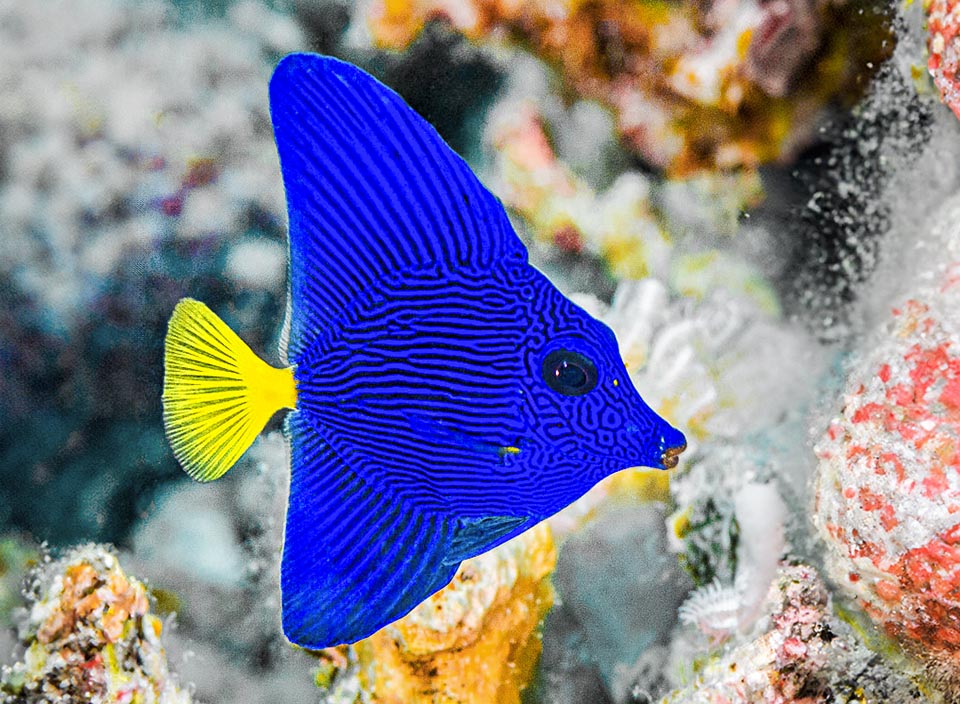
With extended fins the young have a triangular look, quite different from the roundish one of the adults. The tail is rounded and the body shows dark horizontal bands © François Libert
The reproduction occurs in groups with pelagic eggs entrusted to the currents. The resilience of the species is mediocre with a possible doubling of the populations in 1,4 and 4,4 years, but the fishing vulnerability marks only 27 on a scale of 100.
In the IUCN Red List of the endangered species the Zebrasoma xanthurum consequently appears as “Least Concern”.
Synonyms
Acanthurus xanthurus Blyth, 1852.
→ For general information about FISH please click here.
→ For general information about BONY FISH please click here
→ For general information about CARTILAGINOUS FISH please click here.
→ To appreciate the BIODIVERSITY of BONY FISH please click here.
→ To appreciate the BIODIVERSITY of CARTILAGINOUS FISH please click here.
